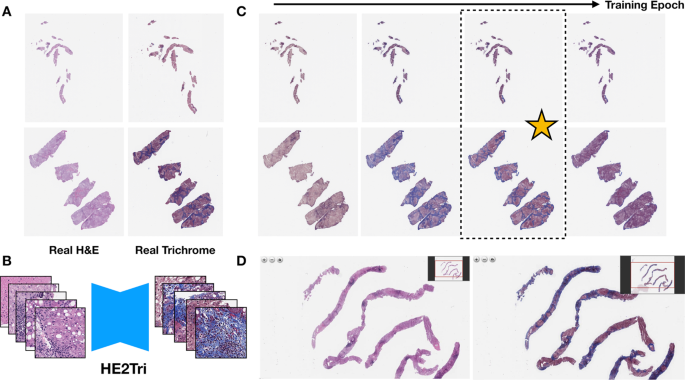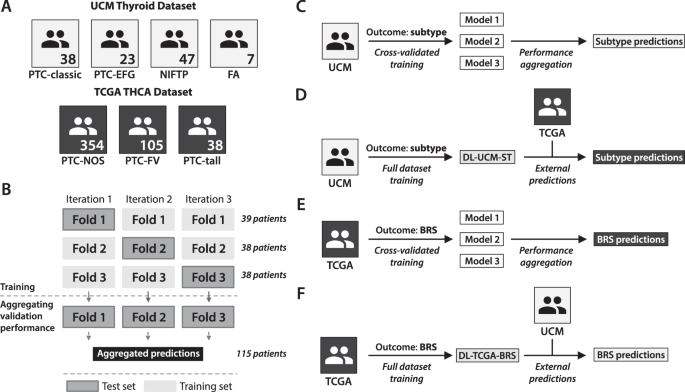| Message:
Search
Advanced Search
Share
COVID-19 articles
Español EnglishEditorial Board Publish in this journal
December 2020 Secondary erythromelalgia – case report
Home
Articles in press
Current Issue
Archive
Supplements
Most Often Read
Journal Information
Previous article | Next article
Vol. 111. Issue 10.
pages 885-886 (December 2020)
Lee este artículo en Español Share Print Download PDF
CASE AND RESEARCH LETTERS
DOI: 10.1016/j.adengl.2020.11.003
Open Access
Secondary erythromelalgia – case report
Eritromelalgia secundaria: informe de caso
F. Gila,
, P. Luísb, M. Duartec, C. Martinsa
a Departamento de Dermatología, Hospital de Santarém EPE, Santarém, Portugal
b Departamento de Anatomía Patológica, Hospital de Santarém EPE, Santarém, Portugal
c Departamento de Hematología, Hospital de Santarém EPE, Santarém, Portugal
This item has received
145
Visits
(Daily data update)
Under a Creative Commons license
Article informationFull Text Bibliography Download PDF Statistics
FULL TEXT
To the editor,
A 56-year-old caucasian female presented to our dermatology department with episodes of erythematoviolaceous dyschromia along the outer side of the left foot. The dermatosis had started 1year before and the patient was having 2-3 episodes per month, each one lasting from hours to a maximum of 2 days, with variable intervals between the crises. The condition was accompanied by a nonspecific local discomfort, although the patient denied manifest pain. Each episode evolved towards total resolution, with no sequelae. At this point, the functional impact caused by the dermatosis was negligible. Previous medical history was unremarkable and there were no new drugs administered. The patient had noticed the complaints were favored by the pending position of the left lower limb and contact with hot water and relieved with ibuprofen and by raising the limb. Physical examination revealed only 2 erythematoviolaceous plaques on the outer side of the left foot, with relatively well defined borders (Fig. 1). An incisional skin biopsy obtained from one of the lesions showed non-specific findings: a capilar proliferation in the dermis, with some ectatic vessels, and a a discrete lymphocytic inflammatory infiltrate. In the following months, thrombocytosis (800×109/L) and a borderline erythrocitosis (15,4g/dL) were detected in routine analyses and the patient was referred to hematology consultation. Concomitantly there was a clinical worsening of the dermatosis, with an increase in the frequency and severity of the episodes, including nocturnal, now inducing local pain, warmth and sensation of burning. The dimensions of the left foot plaque increased and the dermatosis progressed, involving both hands (Fig. 2) and feet, this time markedly limiting the functional capacity of the patient. At this point the patient underwent laboratory studies searching for autoimmunity, which were negative. Meanwhile the investigation performed in the context of hematology, with bone marrow examin ation findings compatible with a myeloproliferative neoplasm, allowed the diagnosis of polycythemia vera with positive JAK-2 mutation. Conjugating the clinical and histopathological data available with the polycythemia vera detected, the diagnosis of erythromelalgia secondary to the myeloproliferative disorder was established. In collaboration with hematology, the patient was started on hydroxyurea 500mg/day and acetylsalicylic acid 100mg/day and advised to avoid the precipitating factors and comply with resting periods with raised lower limbs. This approach lead to an evident symptomatic improvement: after 6 months the patient had no more episodes of erythematoviolaceous plaques although reported occasional warmth and discomfort on the left foot. Platelet count and hemoglobin normalized.
Well defined erythematoviolaceous plaques on the outer side of the left foot.
Figure 1.
Well defined erythematoviolaceous plaques on the outer side of the left foot.
(0.07MB).
Erythema on the palmar surface of the fingers.
Figure 2.
Erythema on the palmar surface of the fingers.
(0.06MB).
Erythromelalgia is a rare clinical syndrome characterized by episodes of erythema, increased temperature and burning pain, primarily involving the extremities,1,2 with lower limbs being more commonly affected.3 Physical exercise, dependency of the affected limbs and heat exposure are potential triggers, while cold, rest and elevation relieve symptoms.1–4 The classification of this condition varies among authors, but essentially there are primary forms, which can be further divided into familial or sporadic of early (juvenile) or late (adult) onset, and secondary forms.5 Multiple diseases are associated with this clinical picture, such as myeloproliferative neoplasms, arterial hypertension, venous insufficiency, diabetes mellitus, systemic lupus erythematosus, rheumatoid arthritis, lichen sclerosus, gout, spinal diseases and multiple sclerosis.2,4,6 Associated diseases may precede erythromelalgia, coincide with the beginning of the disease or occur during its evolution.7,8 Ethiopath ogenesis of erythromelalgia is not known. Vascular abnormalities, small-fiber neuropathy and arteriovenous shunting are thought to be involved, contributing to the erythema and pain, but is unclear which one is the inciting event or primary abnormality.1,4,5 Histology is usually non-specific and some biopsy specimens don't show any pathological findings but capillary proliferation, swelling of endotelial cells, perivascular edema and a sparse lymphocytic infiltrate are common.2 There are no established diagnostic criteria, no clinical guidelines of management or large randomised controlled trials of treatment.3,9 Erythema, burning pain and hyperalgesia are features of many conditions. Posttraumatic reflex dystrophies, including causalgia, reflex sympathetic dystrophy and shoulder-hand syndrome, can closely mimic erythromelalgia. Peripheral neuropathies, peripheral vascular disorders, Fabry disease and bacterial cellulitis should also be included in the differential diagnosis.6,10 In the absence of a confirmatory diagnostic test, diagnosis is based on a careful history and supported by physical examination during the episodes and, once a diagnosis is established, potential secondary causes must be excluded.5 There is no universally effective treatment for erythromelalgia and the mainstay of therapy is support and avoidance of triggering factors.1,5 Cases of erythromelalgia that are associated with myeloproliferative disorders usually respond to aspirin.11 Otherwise, drugs acting in the neuropathy (gabapentin, tricyclic antidepressants, selective inhibitors of serotonina reuptake), in vasculopathy (acetylsalicylic acid, calcium channel blockers, prostaglandins) and various nerve blocks have been attempted, with variable success.1,4,5 In our case the patient presented initially with non-specific clinical and histological pictures. The diagnosis of erythromelalgia was only established after the detection of polycythemia vera and the exacerbation of the symptomat ology, with the characteristic triad of erythema, hyperthermia and pain with intense burning. Our patient's complaints were successfuly controled with daily low-dose aspirin. In our case, besides erythromelalgia, which can cause ulcers in severe cases, hydroxyurea, used in the treatment of polycythemia vera, can also induce distal cutaneous ulceration, an association to keep in mind in the follow-up of the patient. Erythromelalgia is a rare heterogeneous disorder with a variable spectrum of severity and should be considered in patients with paroxysmal neuropathic pain. It is probably underdiagnosed and its early recognition is crucial to minimize the impact on patients' quality of life.
REFERENCES
[1]
B.C. Kang, D.J. Nam, E.K. Ahn, D.M. Yoon, J.G. Cho.
Secondary erythromelalgia - a case report.
Korean J Pain., 26 (2013), pp. 299-302
http://dx.doi.org/10.3344/kjp.2013.26.3.299 | Medline
[2]
W. Bakkour, L. Motta, E. Stewart.
A case of secondary erythromelalgia with unusual histological findings.
Am J Dermatopathol., 35 (2013), pp. 489-490
http://dx.doi.org/10.1097/DAD.0b013e31827eaee9 | Medline
[3]
L. Parker, C. Ponte, K. Howell, V. Ong, C. Denton, B. Schreiber.
Clinical features and management of erythromelalgia: long-term follow-up of 46 cases.
Clin Exp Rheumatol., 35 (2017), pp. 80-84
Medline
[4]
L. Albuquerque, E. França, V. Kozmhinsky, M. Querino, A. Morais.
Primary erythromelalgia: case report.
An Bras Dermatol., 86 (2011), pp. 131-134
http://dx.doi.org/10.1590/s0365-05962011000100019 | Medline
[5]
S. Gaur, T. Koroscil.
Late-onset erythromelalgia in a previously healthy young woman: a case report and review of the literature.
J Med Case Rep., 3 (2009), pp. 106
http://dx.doi.org/10.1186/1752-1947-3-106 | Medline
[6]
M.B. Leroux.
Erythromelalgia: a cutaneous manifestation of neuropathy?.
An Bras Dermatol., 93 (2018), pp. 86-94
http://dx.doi.org/10.1590/abd1806-4841.20187535 | Medline
[7]
O.M. Kalgaard, E. Seem, K. Kvernebo.
Erythromelalgia: a clinical study of 87 cases.
J Intern Med., 242 (1997), pp. 191-197
http://dx.doi.org/10.1046/j.1365-2796.1997.00185.x | Medline
[8]
S. Badeloe, C.J. Henquet, C.M.G. Nieuwhof, J. Frank.
Secondary erythromelalgia involving the ears probably preceding lupus erythematosus.
Int J Dermatol., 46 (2007), pp. 6-8
http://dx.doi.org/10.1111/j.1365-4632.2007.03500.x | Medline
[9]
T. Kondo, T. Uehara, A. Ikegami, M. Ikusaka.
Paroxysmal burning pain caused by erythromelalgia.
Lancet., 383 (2014), pp. 1692
http://dx.doi.org/10.1016/S0140-6736(14)60655-3 | Medline
[10]
J. Belch, I. Mackay.
Erythromelalgia: symptom or syndrome?.
Vascular Medicine Review., 3 (1992), pp. 31-39
[11]
D. Lipsker.
A white hand and a red hand - Erythromelalgia.
N Engl Med., 363 (2010), pp. 1463
☆
Please cite this article as: Gil F, Luís P, Duarte M, Martins C. Eritromelalgia secundaria: informe de caso. Actas Dermosifiliogr. 2020;111:885–886.
Copyright © 2020. AEDV
Subscribe to our newsletter
Enter your email address
Special content about COVID-19
Spanish Dermatology in the COVID-19 Era
Impact of the COVID-19 pandemic on immunomodulatory and immunosuppressive therapies in dermatology: Patient and physician attitudes in Argentina
See more
Tools
Print
Send to a friend
Export reference
CrossMark
Mendeley
Statistics
Multimedia
A Two-Color Tumor
More images.
Academia Española de Dermatología y Venerología
Publish in
Actas Dermo-Sifiliográficas
Instructions for authors
Submit an article
Ethics in publishing
Actas Dermo-Sifiliográficas (English Edition) is a member and subscribes the principles of, the Committee on Publication Ethics (COPE)
www.publicationethics.org.
Read
Articles in press
Current Issue
Most Often Read
Archive
Archive
Supplements
Publish in this journal
Instructions for authors
Submit an article
Ethics in publishing
Editorial Board
Legal terms
Reproduction terms
Terms and conditions
Privacy policy
Subscribe
Email alerts
RSS
Advertising
Contract
Contact Editorial Board
© Copyright 2020. Academia Española de Dermatología y Venerología
Cookies are used by this site. To decline or learn more, visit our Cookies page.
|



